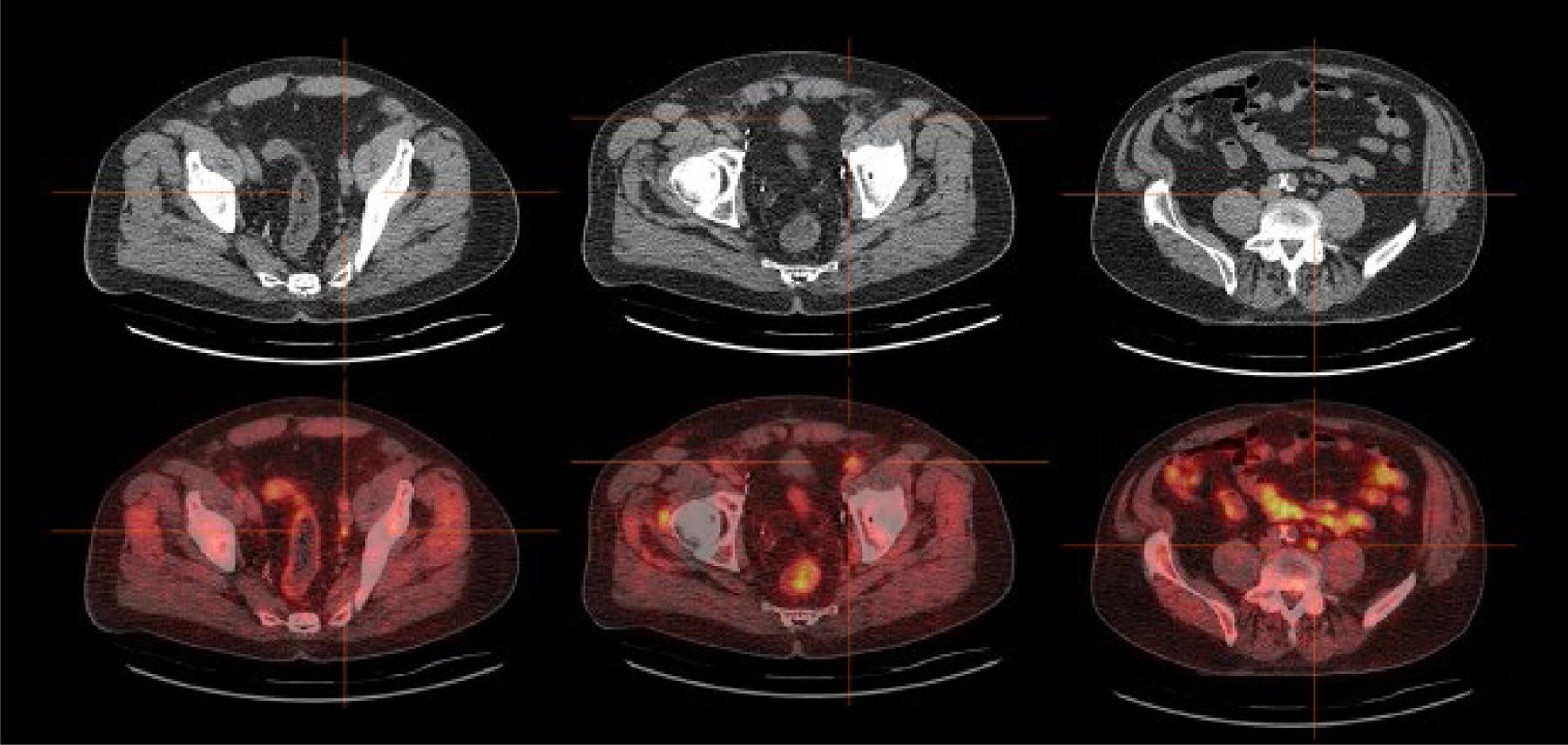Figure 5.

Example of impact of 18F-fluciclovine-PET/CT on patient management. This 67-year-old man underwent radical prostatectomy for pT2cN0, Gleason 3+4 disease after which his PSA remained undetectable for 2.5 years. He was then lost to follow-up, but was found to have biochemical recurrence 14 years after prostatectomy (PSA 11.6ng/mL increasing over 3 months to 16.3ng/mL). Bone scintigraphy and CT of the abdomen and pelvis showed no evidence of recurrent disease. 18F-Fluciclovine-PET/CT showed focally increased uptake in three normal-sized lymph nodes: left obturator (left panel), left external iliac (middle panel) and paraaortic (right panel). The patient’s treatment plan was adjusted to include boost radiotherapy to these oligometastatic sites, as well as conventional salvage prostate bed/pelvic radiotherapy and androgen-deprivation therapy for 1.5 years. The patient’s PSA remained undetectable for three years, but had increased to 0.17ng/mL at last follow-up.
